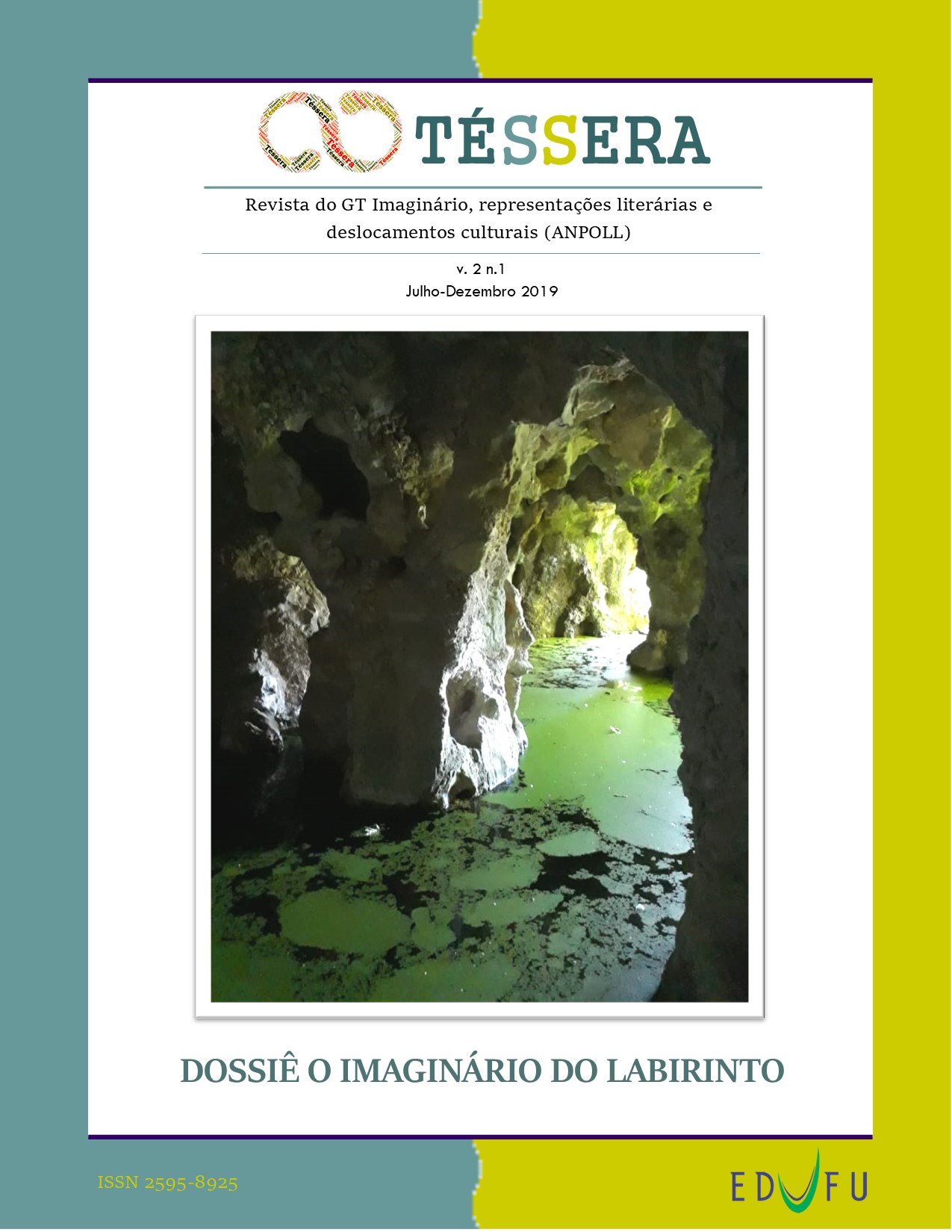MAZING CITY AND SYMBOLIC ARTICULATIONS OF AN URBAN IMAGINARY
CHILD REPRESENTATIONS ABOUT IMBITUBA, SANTA CATARINA
DOI:
https://doi.org/10.14393/TES-v2n1-2019-51068Keywords:
Imaginary, Children's Imaginary, Symbolic hermeneutics, Maze, Imbituba/SCAbstract
This article proposes the discussion about the urban imaginary of Imbituba, Santa Catarina, from children's representations. What prompted the analysis proposal was part of the results of a broader research on the symbols of the city, identity and belonging. Here, specifically, we deal with the symbolic articulation with the maze myth. We are based on the structures of the Imaginary, from Durand, understood as the internal reason that animates our ways of being, thinking and being in the world. Thus, through symbolic hermeneutics, we seek to understand the representations that forge an imaginary city, from the symbolic constellations and mythical emergence that aroused, especially the image of the maze. Through the representation of the (dis) paths of the city we can see the search for a trajectory (of place and of itself).
Downloads
References
ARAÚJO, Alberto Filipe; ALMEIDA, Rogério de. Fundamentos metodológicos do imaginário: mitocrítica e mitanálise. In: Téssera, v.1, n.1, p. 18-42, Uberlândia, jul-dez 2018.
ARAÚJO, Alberto Filipe; WUNENBURGER, Jean-Jacques. Introdução ao imaginário. In: ARAÚJO, Alberto Filipe. BAPTISTA, Fernando Paulo. Variações sobre o imaginário. Piaget: Lisboa, 2003. p. 23-44.
AVIZ, Emanuelle Querino Alves de. Símbolos de Imbituba/SC: análise comparativa entre o brasão do município e o Imaginário das crianças das escolas municipais. 2019. Dissertação (Mestrado em Ciências da Linguagem). Universidade do Sul de Santa Catarina, Tubarão, 2019.
BARRETO, Marco Heleno. Imaginação Simbólica: Reflexões Introdutórias. Loyola: São Paulo, 2008. 104 p.
BERTIN, G. Gilbert Durand ou o novo espírito antropológico. In: TONIN, Juliana; AZUBAL, Larissa. Comunicação e Imaginário. Porto Alegre: Edipucrs, 2016. P. 17-34.
CAMPBELL, Joseph. As transformações do mito através do tempo. Trad. Heloysa de Lima Dantas. 2 ed. São Paulo: Cultrix, 2015. 260 p.
DURAND, Gilbert. As estruturas antropológicas do imaginário: introdução à arquetipologia geral. 2. ed. São Paulo: Martins Fontes, 2001. 552 p.
______. Campos do Imaginário. Lisboa: Instituto Piaget, 1996.
ELIADE, Mircea. Imagens e Símbolos. Lisboa: Arcádia, 1979. 173 p.
FERREIRA-SANTOS, Marcos; ALMEIDA, Rogério de. Aproximações ao imaginário: bússola de investigação poética. São Paulo: Képos, 2012. 176 p.
MAFFESOLI, Michel. O imaginário é uma realidade. Revista FAMECOS, Porto Alegre, n. 15, p.74-82, agosto. 2001a.
______. O eterno instante. Lisboa: Piaget, 2001b.
MEUNIER, Mário. Nova mitologia clássica: a legenda dourada, história dos deuses e heróis da antigüidade. 2. ed. São Paulo: IBRASA, 1976. 391 p.
MORAES, Heloisa Juncklaus Preis. A descoberta e a vivência do virtual: experiências infantis. Florianópolis: DIOESC, 2012. 194 p.
ORTIZ-OSÉS, Andrés. Hermenêutica, Sentido e Simbolismo. In: ARAÚJO, Alberto Filipe. BAPTISTA, Fernando Paulo. Variações sobre o imaginário. Piaget: Lisboa, 2003. p. 93-139.
PAULA CARVALHO, José Carlos de. Pedagogia do Imaginário e culturanálise de grupos: educação fática e ação cultural. In. R.Fac.Educ., São Paulo (15)2; 133-151 jul/dez 1989.
PITTA, Danielle Perin Rocha. Iniciação à teoria do imaginário de Gilbert Durand. Rio de Janeiro: Atlântica Editora, 2005. 106 p.
PRECIOSO, Adriana Lins. O Mito do Labirinto e o Percurso até a Cidade Moderna. In: RAMOS, Celeste. (Org.) Mitos: perspectivas e representações. Campinas: Alínea, 2005. p. 75-83.
PREFEITURA DE IMBITUBA. Brasão de Imbituba. Disponível em: <http://www.imbituba.sc.gov.br/cms/pagina/ver/codMapaItem/49285>. Acesso em: 04 mai. 2018.
RANDAZZO, Sal. A criação de mitos na publicidade: como os publicitários usam o poder do mito e do simbolismo para criar marcas de sucesso. Rio de Janeiro: Rocco, 1997.
WUNENBURGER, Jean-Jaques. A árvore de imagens. Revista Intexto, Porto Alegre, UFRGS, n. 41, p. 58-69, jan./abr. 2018.
______. O imaginário. Trad. Maria Stela Gonçalves. São Paulo: Loyola, 2007. 104 p.
Downloads
Published
How to Cite
Issue
Section
License
Authors who publish in this journal agree to the following terms:
Authors retain the copyright and waiver the journal the right of first publication, with the work simultaneously licensed under the Creative Commons Attribution License (CC BY-NC-ND 4.0), allowing the sharing of work with authorship recognition and preventing its commercial use.
Authors are authorized to take additional contracts separately, for non-exclusive distribution of the version of the work published in this journal (publish in institutional repository or as a book chapter), with acknowledgment of authorship and initial publication in this journal.


